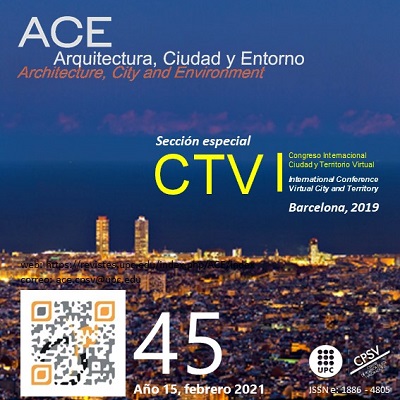Residential Lighting Performance Indicators
DOI:
https://doi.org/10.5821/ace.15.45.9536Keywords:
lighting indicators, energy performance, visual comfort, healthAbstract
One way to evaluate lighting efficiency considers the use of lighting indicators, to guide design decisions. Nevertheless, there are not many tools allowing for an integration of quantitative and qualitative aspects of artificial lighting, mainly for the residential use, that has a deficient approach, falling short of the other architectural uses in the standards of artificial lighting. The aim of this paper is presents a new proposal to evaluate artificial lighting performance that meets the demands of visual comfort, health, and assures an adequate energy performance. In an integrated manner, it has been joined three aspects involved in the quality of a lighting design. The methodology adopted is based in a parametric analysis of the performance consider different artificial lighting systems in a typical living/dining room. It is supported by computer simulations, aiming to investigate the influence of lighting design variables on energy performance, visual comfort and health in these rooms. The results reveal a set of intrinsically related indicators. The band with the best results was obtained with a Lighting Power Density indicator (LPD) of between 3.5 and 10 W/m2, includes a set of technical requirements that present high-efficiency levels of the light, the colour reproduction (CRI) a warm colour temperature. The residential lighting performance indicators may contribute to the improvement of the standards with reflexes on the professional activities of lighting designers.
Published
Issue
Section
License
| INTELECTUAL PROTECTION CRITERIA |
At this moment, it is count with the "Oficina Española de Patentes y Marcas", while global protection it is being processed by the World Intelectual Property Organization (OMPI/WIPO). Nevertheless the International Standard Serial Number Office (ISSN) has given the following numbers ISSN: 1886-4805 (electronic version) and 1887-7052 (paper version). All articles will be peer reviewed, using double blind reviewing. |
| COPYRIGHT |
The article contents and their comments are authors exclusive liability, and do not reflect necessarily the journal editor commitee's opinion. All ACE published works are subject to the following licence CC BY-NC-ND 3.0 ES http://creativecommons.org/licenses/by-nc-nd/3.0/es/ It implies that authors do not hold nor retain the copyright without restrictions but only those included in the licence. |


































